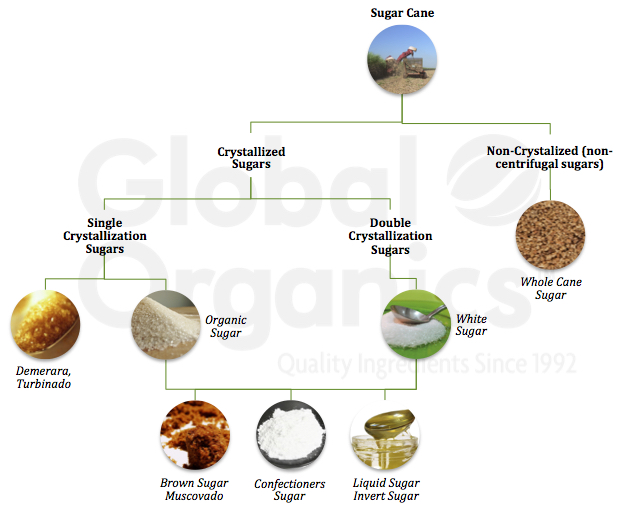A Closer Look at Sugar and Cane in the Global Food Industry
Optimizing Sugar Manufacturing With Effective Walking Cane Sugar Processing Chemicals
The optimization of sugar manufacturing with the strategic usage of walking stick sugar processing chemicals is a crucial location of focus for manufacturers aiming to enhance return and top quality. Reliable application of clearing up flocculants, enzymes, and representatives can considerably impact removal performance and juice quality, yet the complexities of their communications warrant mindful consideration. Comprehending the nuances of these chemicals not only promotes conformity with market requirements yet also straightens with sustainability objectives. As the field progresses, what innovative practices and emerging fads will shape the future of sugar processing?
Significance of Handling Chemicals
Handling chemicals play a crucial role in the production of walking cane sugar, improving both effectiveness and quality throughout the manufacturing process. These chemicals are made use of at various stages, consisting of extraction, purification, and explanation, to enhance the yield and pureness of the end product - sugar and cane. By assisting in the break down of plant cell wall surfaces, refining chemicals make certain a more efficient removal of sucrose from sugarcane, therefore boosting general manufacturing effectiveness
Moreover, the usage of processing chemicals aids in the elimination of pollutants such as dust, waxes, and non-sugars that can detrimentally impact the high quality of the sugar. This results in a more crystal-clear and refined item, which is crucial for satisfying industry criteria and customer assumptions. Furthermore, these chemicals can help support the sugar throughout storage, stopping deterioration and maintaining its high quality with time.
The calculated application of processing chemicals additionally adds to environmental sustainability by minimizing waste and improving resource performance. By taking full advantage of removal prices and minimizing impurities, makers can attain higher success while sticking to environmental guidelines. On the whole, the importance of processing chemicals in walking stick sugar production can not be downplayed, as they are important for attaining optimum cause both yield and quality.
Kinds Of Cane Sugar Handling Chemicals
A range of chemicals are used in the processing of walking stick sugar, each serving particular functions to boost manufacturing performance and item top quality. Among the most common types are making clear representatives, that include lime and phosphoric acid. These chemicals assist eliminate contaminations and help with the information of juice during the extraction process.
An additional important group consists of flocculants and coagulants, such as polyacrylamide and jelly, which aid in the pile of suspended bits, thus boosting the filtration of sugar juices. Additionally, sulfur dioxide is often utilized as a bleaching representative, helping in the removal of colorants while preserving the desired taste account.
Acids, like acetic and citric acid, are necessary for pH change, promoting optimum conditions for chemical responses and enhancing overall sugar recovery. Antifoaming agents, such as polydimethylsiloxane, are used to alleviate foam development during boiling procedures, making sure smooth operations.

Advantages of Effective Chemical Use
Utilizing chemicals successfully in walking cane sugar processing yields considerable advantages that enhance both manufacturing performance and product quality. The proper use of handling chemicals can lead to enhanced removal rates, allowing producers to optimize the he has a good point yield from raw walking cane sugar. Boosted extraction not just decreases waste but likewise maximizes resource application, adding to cost financial savings.
Furthermore, effective chemical application aids in the explanation and filtration stages, leading to a higher-quality final result. This is important for fulfilling consumer expectations and governing requirements, as contaminations can affect preference, shade, and overall bankability. Making use of specific flocculants and clarifying agents can accelerate the elimination of contaminations, making sure a clearer syrup and, inevitably, granulated sugar.
In addition, the appropriate chemicals can improve the stability of the sugar during storage space and transport, lowering the danger of spoilage and protecting quality. This stability is essential for preserving item honesty in an open market. On the whole, the tactical application of processing chemicals not just simplifies procedures but additionally raises the final item, making certain that manufacturers can provide high-quality cane sugar effectively and sustainably.

Ideal Practices for Application
Applying ideal methods for the application of chemicals in walking stick sugar handling can considerably maximize results and improve total performance. Initially, it is important to perform a comprehensive analysis of the sugarcane quality and the certain handling requirements to establish the suitable chemical formulations. This tailored approach ensures that chemicals are used effectively and decreases waste.
Proper dosage is an additional important factor; adherence to manufacturer guidelines is important in accomplishing wanted outcomes without over-application, which can lead to adverse environmental impacts and enhanced expenses. Normal calibration of application devices is needed to make sure precise circulation and uniform coverage of chemicals.
Additionally, timing of application plays an important role. sugar and cane. Chemicals should be used at ideal stages of the processing cycle, such as during extraction or explanation, to optimize their effectiveness. Keeping track of the handling conditions, including temperature level and pH levels, can additionally boost chemical this contact form performance
Last but not least, training workers on security methods and functional procedures is essential. By cultivating a society of safety and compliance, centers can minimize threats related to chemical handling while guaranteeing optimum chemical application for improved sugar return and top quality.
Future Fads in Sugar Handling
As the cane sugar market develops, several future patterns are poised to improve processing methods and boost sustainability. One considerable trend is the raising fostering of automation and electronic technologies, which enhance operations and enhance performance. Advanced analytics and maker learning algorithms can optimize processing criteria, causing decreased waste and higher sugar yields.
Additionally, the integration of renewable power sources right into sugar handling facilities is on the rise. Making use of biomass energy from sugarcane byproducts not just decreases the carbon impact however additionally reduces operational expenses. This shift straightens with international sustainability objectives and enhances the industry's durability against changing energy costs.

Additionally, the solution of greener processing chemicals is getting grip. Manufacturers are creating biodegradable and safe choices that keep efficacy while reducing environmental impact - sugar and cane. This trend not only addresses regulative stress however likewise fulfills consumer needs for lasting methods
Final Thought
The effective application of cane sugar processing chemicals is integral to maximizing sugar manufacturing. By utilizing clearing up enzymes, agents, and flocculants, manufacturers can substantially enhance removal prices and boost juice clearness, inevitably resulting in higher yields and remarkable product high quality. Sticking to ideal techniques in chemical usage not only advertises sustainability and decreases waste but likewise positions manufacturers to satisfy progressing sector criteria. Constant innovation and adjustment in processing methods will certainly be essential for future innovations in sugar manufacturing.
